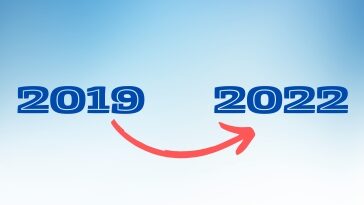Imagine being a young professional, just starting fresh with your career. You are eager to secure a financially stable future. You know retirement is far off, but you’re already thinking about ways to invest wisely. You’re nearing retirement age and are worried about whether you’ve saved enough to live comfortably in your golden years. Saving for retirement can feel overwhelming. The rules governing how you save are constantly changing.
Enter the SECURE Act 2.0, a significant piece of legislation designed to make saving for retirement easier, more accessible, and more effective for Americans of all ages. Building on the original SECURE Act passed in 2019, SECURE 2.0 introduces a series of reforms aimed at simplifying retirement savings, providing more opportunities for individuals to save, and encouraging employers to offer better retirement benefits.
Whether you’re just starting in your career, in the middle of your working years, or preparing for retirement, SECURE Act 2.0 could be the key to helping you reach your retirement goals with less hassle and more security. In this blog, we’ll dive into the highlights of this new law and explore how it might impact your financial future.
What is the Secure Act 2.0



The SECURE Act 2.0 is officially titled the “Securing a Strong Retirement Act of 2022.” It is builds upon the original SECURE Act passed in 2019. Its primary goal is to enhance retirement security for Americans. It aims to make it easier to save for retirement, particularly as many people face challenges in preparing for a financially stable future.
December 2022 marked the signing of the SECURE Act 2.0 into law. It introduces a range of changes designed to simplify retirement savings, improve access, and encourage more people (younger workers, older workers, and small businesses) to engage in long-term financial planning.
Features of SECURE Act 2.0
Higher Age for Required Withdrawals (RMDs)
When you turn a certain age, you have to start taking money out of your retirement accounts (like 401(k)s or IRAs). This is called a Required Minimum Distributions RMD. With SECURE 2.0, the mandatory withdrawal age has been pushed back. It used to be 72; now it’s 73, starting in 2023. In 2033, it will go up to 75. This gives your retirement money more time to grow before you have to take it out.
Automatic Enrollment in Retirement Plans
When companies offer retirement plans like 401 k auto enrollment, they have to let employees choose whether to join. With auto-enrollment, employees will be automatically signed up for a retirement plan unless they choose not to participate. In 2025, a new rule takes effect requiring most employers to automatically sign up employees for retirement plans. This supports earlier retirement saving for a wider range of individuals.
Larger Catch-Up Contributions for Older Workers
If you’re over 50, you can put extra money in your retirement plan to help you save more for retirement. This extra money is called “roth catch up contributions”. SECURE 2.0 increases the amount you can contribute. If you’re aged 60 to 63, you can now contribute up to $10,000 more in your 401 k auto enrollment, compared to the $6,500 allowed before.
Student Loan Payments Can Count for Retirement Matching
If you’re paying off student loans, it can be tough to save for retirement. But now, employers can match your student loan payments with contributions to your retirement savings. This means employers can help you save for retirement. If you’re still paying off school debt, employers can match your loan payments with retirement plan contributions.



Emergency Savings Account
Sometimes, you need money in an emergency, like a health issue or a car repair. Yet, you don’t want to raid your retirement savings. SECURE 2.0 allows for penalty-free withdrawals from some retirement accounts in certain emergencies, so you don’t face a tax penalty for taking out money when you need it.
Simplified Retirement Plans for Small Businesses
Small businesses often don’t offer retirement plans because they’re complicated or too expensive to manage. SECURE 2.0 makes it easier and cheaper for small businesses to set up retirement plans for their employees, which means more workers will have access to retirement savings options.
Part-Time Worker Retirement Access
In the past, part-time workers couldn’t always contribute to retirement plans. Part-time employees who work at least 500 hours a year for two straight years will be able to participate in their company’s retirement plan. This will give them more opportunities to save.
Implications for Various Groups

People from diverse backgrounds stand to gain from the useful measures in the SECURE Act 2.0. For young workers, automatic enrollment in retirement plans and access to Roth catch up contributions options will help them start saving early. This will set them up for long-term financial success. Pre-retirees will benefit from the increase in catch-up contributions and the delay in the required minimum distributions rmds age. This will give them more time to grow their savings and plan for retirement. Retirees will find the delayed required minimum distributions rmds age helpful. It allows them to keep more funds in their retirement accounts for longer. It reduces taxes in their later years. Low-income workers will be encouraged to save with the expanded Saver’s Credit. This will provide direct contributions to their retirement accounts. Finally, small business owners will benefit from making retirement plans more accessible to part-time workers. This helps employees save for the future through automatic enrollment options.
Potential Challenges
The SECURE Act 2.0 brings some good changes, but it also has a few challenges. One problem is that people who earn a lot of money and have to put money into Roth accounts might have to pay more taxes right away. This is because roth catch up contributions accounts are taxed before you put the money in, unlike other retirement accounts. So, high earners might be surprised by how much tax they need to pay when they make these contributions.


Another problem is the automatic enrollment feature in retirement plans. While automatic enrollment is meant to help employees start saving for retirement, some workers might not realize they’ve been signed up for a plan. This could lead to unexpected deductions from their paycheck, especially for those who don’t pay much attention to their retirement plans. Additionally, some employees may not want to participate in the plan at all. They might find it difficult to opt out if they don’t fully understand how the process works or how to change their contribution amount. Some employees might feel forced into participating, which could lead to frustration and confusion.
Small businesses may face hurdles as a result of the SECURE Act 2.0. Smaller companies may struggle to follow the new rules. This is notably the case for businesses offering retirement plans. 401 k auto enrollment,roth catch up contributions, and part-time workers add complexity. The added costs and work can be overwhelming. Small businesses may not have enough resources or staff. Managing all the changes can be difficult. It could make it harder to offer good options. Some businesses might even stop offering retirement plans. The complexity and cost may push them away.
Conclusion
In conclusion, the SECURE Act 2.0 offers significant changes. It helps people save more for retirement. The RMD age is increased to 73 under the act. Older workers can also contribute more to plans. Roth contributions are encouraged for higher earners. The Act also expands access to retirement plans. Automatic enrollment helps people start saving earlier. This increases the opportunity for long-term growth. For many, it’s now simpler to save for retirement.


However, there are challenges with these changes. High earners may face higher taxes this year. Some employees may not realize they’re enrolled. This could lead to unexpected paycheck deductions. Small businesses may struggle with the new rules. Managing retirement plans could be too costly. They might not have enough resources to comply. This could make offering retirement plans difficult.
Despite these challenges, SECURE Act 2.0 has benefits. The intention is to make retirement saving more accessible and effective for everyone. It helps more people start saving earlier. These changes can lead to greater financial security. However, it’s important to stay informed and plan. Seeking guidance will help make the most of it. The SECURE Act 2.0 reflects a major advancement in retirement policy. It will help more people build retirement savings.

